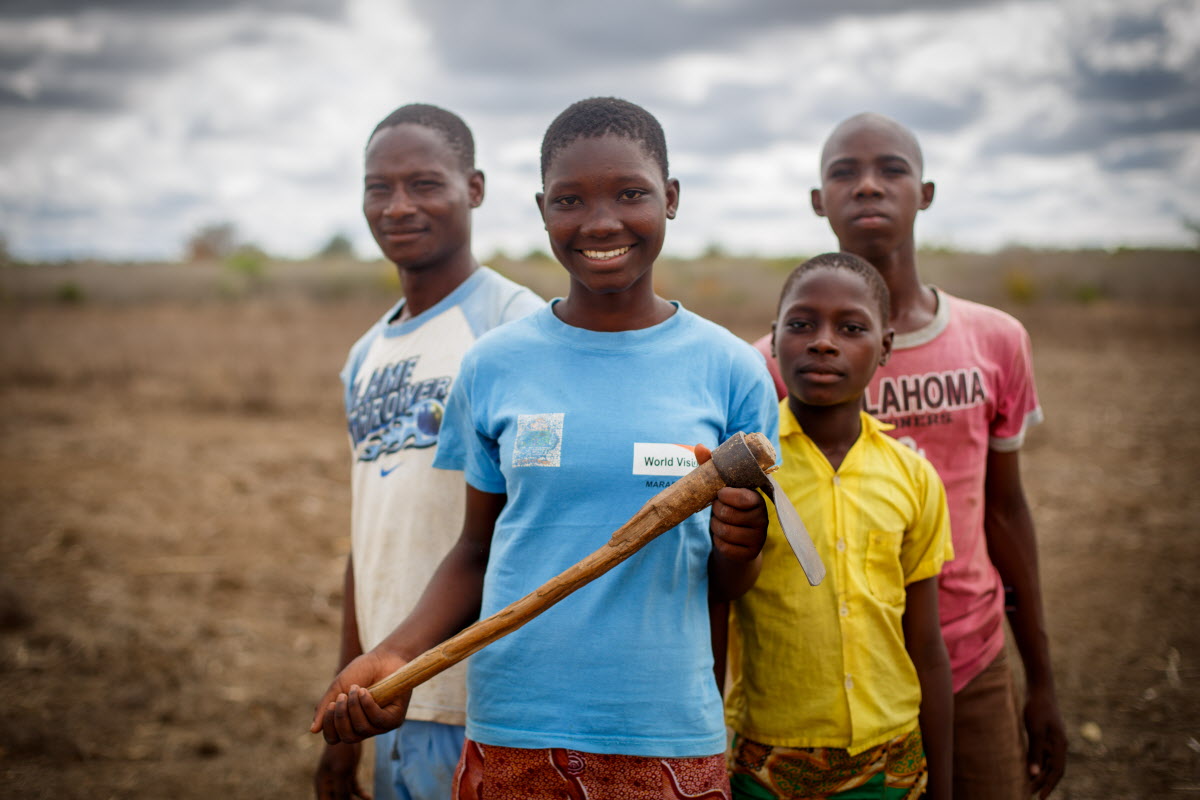In my seven years at World Vision, I’ve been fortunate to be able to see many of our programs, mostly those operated in partnership with the U.S. government and funded by USAID. I knew that these programs were building on work that was being done through funds generously provided by our child sponsors and other donors, but only recently did I have an amazing “a-ha” moment where I saw how much we can leverage sponsorship with our U.S. government funding.
Last November, I was in Kenya visiting our Marafa area program, which is in Kilifi County in the coastal region of Kenya. Marafa is an area program supported by World Vision US, so we work both to support sponsorship there as well as look at opportunities to partner with the U.S. government for greater impact. Despite Marafa’s proximity to the Indian Ocean, the area has suffered from critical water challenges and drought for several years, but then had severe rains early in 2018 that lead to flooding and the destruction of homes and property. For communities that rely on agriculture production to provide food for their families and often as their livelihood, the last few years have been extremely challenging.
World Vision has been working in Marafa for 13 years. In 2014, 13 community members came together around a shared goal of addressing the water crisis in their community. At that time, the nearest water source was 20 kilometers away – more than 12 miles one way – and they had to pay for the water, which was expensive. Women in the community resorted to riding bikes (not traditional in their culture) with several heavy jerry cans on rough roads simply to provide water to their families.
So the community began looking for help and came to World Vision. Our water team did a survey of the area to find out if there was fresh water available and could we drill a borehole to get it. Incredibly, there was one spot that our team found where it would be possible to drill and in April of 2015, after 20 days of drilling, clean water came to Marafa. According to one of the community members, “When World Vision came, we felt we were born again.”

All of this initial work was funded through child sponsorship funding, where World Vision seeks to not only improve the life of the sponsored child, but looks at ways we can improve the lives of the whole community. Unfortunately, as World Vision and the community looked at other opportunities to expand the availability of water, the water table, salinization of the water and other factors meant that there were no other good places to drill in the area. This one borehole and pipelines that can extend it were the only potential source of water for tens of thousands of people in the community.
As a result, our staff and the community did something amazing; they began looking at any partner that would help achieve their goal of bringing clean water to more people. So they talked to the Kilifi County government and the county came in a supported extending the pipeline 24 kilometers and bought a generator that will support the water pump when there isn’t enough solar power (which is how the pump is powered through solar panels). World Vision met with the U.S. Office of Foreign Disaster Assistance, which gave support for the additional pipeline, a larger storage tank to help meet the water demand, and funding for new water kiosks that reduced the distances that would need to be traveled to collect water.
There wasn’t one partner that could do it all, but with the community, World Vision, the county, and the U.S. government all working together, tremendous progress has been made in getting clean water to those that need it. The borehole drilled in 2015 now provides clean water to 25,000 people and the community is continuing to look at ways to reach even more people! I just love this example of how foreign assistance can grow the reach of a project and grow impact in the lives of children and their families and with continued U.S. funding in these kinds of programs, we can do even more.
Take action today: Use the simple form below to contact your elected officials about supporting foreign assistance.
Photo: From left, Dennis, 26, Harusi, 14, Neema, 11, and James, 16. Neema lives in Marafa, Kenya, with eight siblings and her parents. They struggled for years with the side effects of drinking unsafe water from the swamp near their home. Everything changed in 2011, when World Vision drilled a deep borehole well in Marafa. By August 2013, it served 5,000 people. © 2015 World Vision, Chris Huber



One Comment